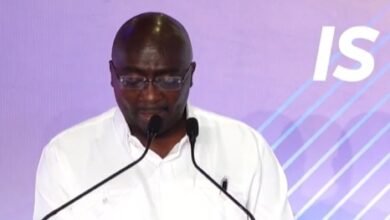Elections 2024: Nationwide “Enough is Enough” Demonstrations Sweep Ghana; NDC Calls For Forensic Audit Of The EC’s Activities
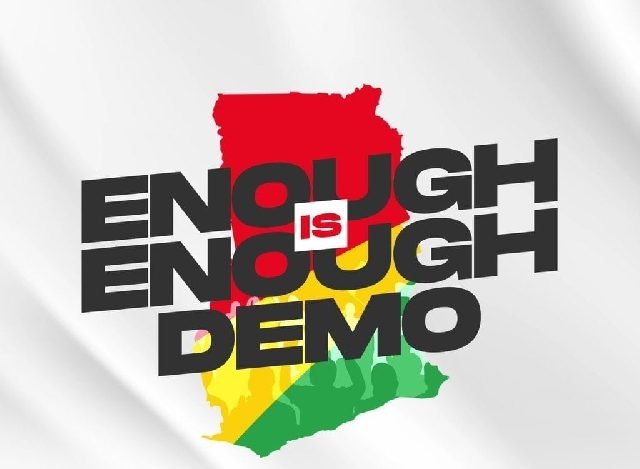
Ghana is currently witnessing the “Enough is Enough” demonstration, organized by the National Democratic Congress (NDC) in all 16 regions. These protests, which started on September 17, 2024, are in response to issues related to alleged irregularities in voter registration, particularly targeting the Electoral Commission (EC). Demonstrators demand a forensic audit of the EC’s activities, focusing on discrepancies found during voter transfers in key constituencies.
Leadership Calls for Peaceful Demonstrations
Former President John Mahama has taken a leading role in the ‘Enough Is Enough’ protests, urging demonstrators to remain peaceful. His call for a non-violent protest has been echoed by NDC officials across the regions, as they aim to maintain the moral high ground and ensure that the message of the demonstration is not overshadowed by violence or chaos. Mahama’s message has struck a chord, with most participants abiding by the call.
Police Collaboration and Route Management
In a bid to maintain order, the Ghana Police Service has collaborated closely with the NDC leadership. Approved routes and timelines have been set for the demonstrators in each region, and the police have vowed to uphold peace and prevent any form of disruption. They have also warned that organizers will be held accountable for any breaches of the agreed-upon conduct. However, the police remain optimistic that the protests will continue peacefully.
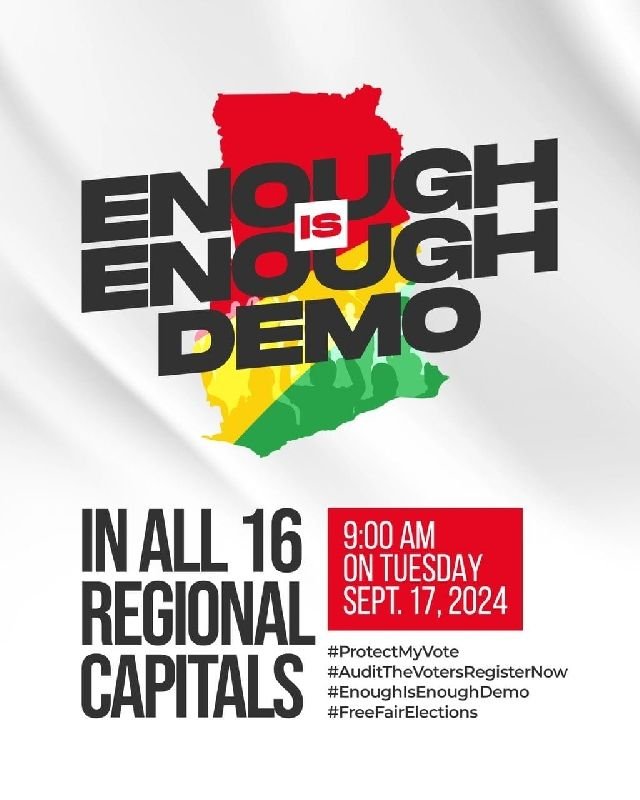
Unique Regional Activities and Reactions
Each region has showcased unique dynamics during the demonstrations:
1. Accra: In the capital, the turnout was massive, with demonstrators carrying placards that read “Forensic Audit Now” and “Fix the Electoral System.” The participants, mostly clad in NDC colors, marched peacefully through the designated routes. There was a noticeable presence of civil society groups that also joined the protest, advocating for electoral reforms across the board. The atmosphere in Accra was charged with determination but remained peaceful.
2. Western Region: Demonstrators in Takoradi, the regional capital, were notable for incorporating drumming and traditional music into their protest. The march, which started from the Kwame Nkrumah Roundabout, saw youth groups actively participating, using social media to live-stream events as they unfolded. This approach helped bring more visibility to the regional protest and engaged the online community.
3. Northern Region: In Tamale, the protest saw a significant turnout of women and youth. What stood out was the use of local dialects to engage the masses, making the protest more accessible to non-English speakers. Protestors in this region emphasized their frustration with how past electoral issues have affected rural development. This unique approach brought more attention to the plight of underserved areas in the northern part of Ghana.
4. Ashanti Region: The protest in Kumasi took a symbolic turn as participants gathered in front of the EC regional office and held a peaceful sit-in. This symbolic act was aimed at sending a direct message to the EC about the seriousness of their demands. Youth and students formed a large part of the protestors, reflecting growing concerns among younger Ghanaians about electoral transparency.
Public Reactions And Support
Public reaction to the protests has been mixed. Many citizens, especially NDC supporters, have expressed solidarity with the demonstrators, calling the protests long overdue. Social media has been abuzz with the hashtag #EnoughisEnough, with both locals and the Ghanaian diaspora showing support. Civil society organizations and election watchdogs have also voiced their support, with some offering to mediate discussions between the NDC and the EC to ensure a peaceful resolution.
However, there has also been pushback from supporters of the ruling party, the New Patriotic Party (NPP). Some have criticized the NDC’s approach, arguing that the focus should be on addressing electoral reforms through institutional mechanisms rather than street protests. The EC, for its part, has yet to make a formal statement regarding the demands for a forensic audit.
Impact on Ghana’s Political Landscape
As the “Enough is Enough” demonstrations continue, their effect on the country’s political landscape remains to be seen. The protests have reignited debates about electoral transparency, the role of the EC, and the broader democratic process in Ghana. With the 2024 general elections on the horizon, these demonstrations are likely to shape public discourse and influence voter sentiment. How the EC and the government respond to the demands will be critical in determining the future of Ghana’s democracy.
The peaceful and organized nature of the protests so far has set a positive tone, but the coming days will determine whether the movement sustains its momentum and whether tangible changes to the electoral process will be achieved.
Some Photos of the Demonstration:
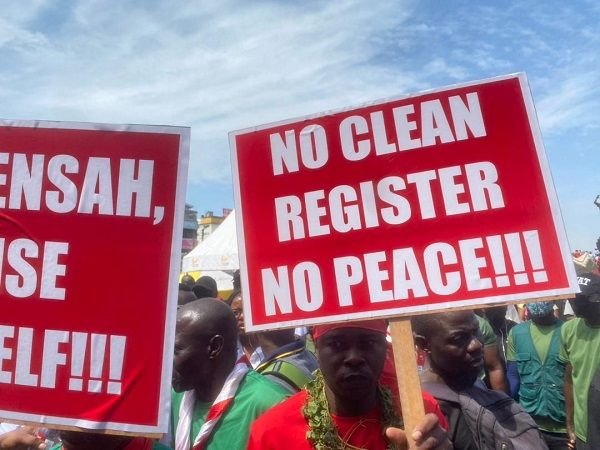
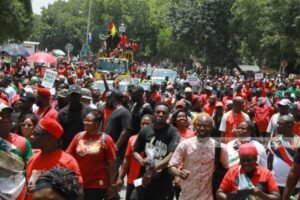
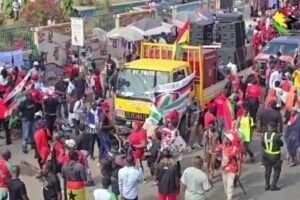
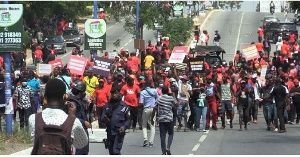
Read More: Gomoa West: Chiefs Flee for Their Lives as NPP and NDC Supporters Clash Over DRIP Machines






